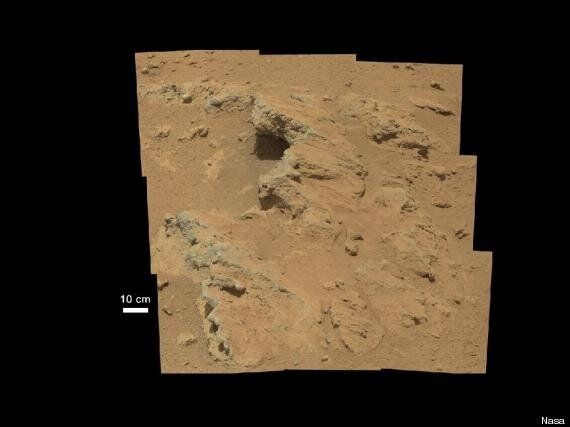
Nasa has found evidence of an ancient flowing stream on the surface of Mars.
The $2.5bn Mars rover Curiosity has discovered ancient stream-bed gravels, which are the first of their kind discovered anywhere other than Earth.
Nasa said it was the first potentially habitable environment discovered on the planet.
The gravel was found between the north rim of Gale Crater and the base of Mount Sharp, a mountain inside the crater.
The rocks are between the size of a grain of sand and a golf ball, which means they could not have been carried in any other way than water flow.
Pictures taken from an orbiting craft above the surface show a fan of material 'washed' down from a channel above it.
The high number of channels in the fan "suggests flows continued or repeated over a long time, not just once or for a few years." Nasa said.
The water was once at least ankle-deep in the area - and that could indicate one of the key conditions for life once existed on the planet.
"This is the first time we're actually seeing water-transported gravel on Mars," said Curiosity science co-investigator William Dietrich.
"From the size of gravels it carried, we can interpret the water was moving about 3 feet per second, with a depth somewhere between ankle and hip deep."
The rover is currently driving towards an area where many types of rocks and landscapes converge known as Glenelg, as part of its two-year mission to look for evidence of life on the planet.
"A long-flowing stream can be a habitable environment," said Mars Science Laboratory Project Scientist John Grotzinger. "It is not our top choice as an environment for preservation of organics, though. We're still going to Mount Sharp, but this is insurance that we have already found our first potentially habitable environment."